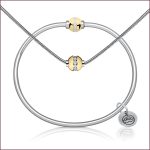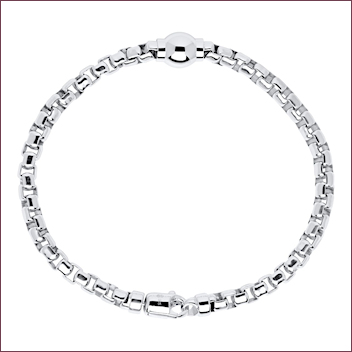Lean Into Your Digital Content
As you think about your own content strategy, consider these things to think about to maximize resources and impact.
If content is the foundation of your brand, having a plan for developing, executing, maintaining, and monitoring that content is essential to its success. It’s an ongoing, evolving approach that must be nimble and omni-channel, and it must involve partnerships with suppliers and staff to be most effective.
Define your brand positioning statement: Develop a statement that defines what you stand for, what your north star is, and your brand voice, encourages Ellen Seckler, CMO of Citizen Watch America, in a Plumb Club podcast, Content is King. Whether you have an in-house design studio or work with an agency, it’s an excellent place to start when developing a brief defining your yearlong strategy and individual projects.
In this context, take the time to determine and define your strengths. “Identify the unique differences that make customers want to work with you,” James Schneider, director of sales at Ostbye, encourages in a Plumb Club podcast, A Changing Industry, What Can You Do To Adapt.
Create a Creative Brief: Develop a content strategy for the entire year. “Use a simple calendar to manage future product offerings, content, and promotions,” Derek Kristopher, associate director of marketing for the New York City-based manufacturer S.D.C Designs, shares in a Plumb Club podcast, The Digital Transformation. Plan monthly, quarterly, or seasonally, but lay it out strategically for the year to create consistency so customers will feel at home when they visit you online. Decide what products to focus on, which audience they’re for, and what emotionally connects them, says Seckler. To help develop your content roadmap, identify the products you need to create unique content for, the ones you can use existing content, and products for which the content needs refresher. Then, it comes down to budget in what and how you execute.
Lean On Suppliers for Assets: Jewelers need not reinvent the wheel when most suppliers are happy to provide marketing assets to help their retail customers create ongoing content, shares Theresa Namie, merchandise manager Ostbye. For its retail partners, the Minneapolis, Minnesota-based manufacturer offers free artwork for social media, digital or print ads, and custom collateral. Especially popular is the brand’s holiday wish book (print and digital), which Namie says is an easy way to have something tangible in clients’ hands and on social media for low-cost advertisement.
 Capitalize On Branded PR Initiatives: Retailers can build their promotional, advertising, and social media calendar by capitalizing on the PR initiatives that many of their vendors are involved in and the materials that brands can provide, Jordan Peck, COO of Brevani, on The Plumb Club podcast, Capitalizing on Branded Content to Drive Engagement. He encourages jewelers to use PR opportunities offered by the brands they carry as PR opportunities to drive people to their stores. A featured brand in multiple seasons of The Bachelorette, Brevani, as a compelling example, works with retail partners to participate in the exposure when episodes featuring its jewelry air throughout the year. Retailers share and tag on to pre-, during, and post-show content, providing a consistent stream of engagement for days around one event, Peck cites. Jewelers report robust interaction from the customer base and social media following, as well as interest from new customers in the area because of the show affiliation.
Capitalize On Branded PR Initiatives: Retailers can build their promotional, advertising, and social media calendar by capitalizing on the PR initiatives that many of their vendors are involved in and the materials that brands can provide, Jordan Peck, COO of Brevani, on The Plumb Club podcast, Capitalizing on Branded Content to Drive Engagement. He encourages jewelers to use PR opportunities offered by the brands they carry as PR opportunities to drive people to their stores. A featured brand in multiple seasons of The Bachelorette, Brevani, as a compelling example, works with retail partners to participate in the exposure when episodes featuring its jewelry air throughout the year. Retailers share and tag on to pre-, during, and post-show content, providing a consistent stream of engagement for days around one event, Peck cites. Jewelers report robust interaction from the customer base and social media following, as well as interest from new customers in the area because of the show affiliation.
Capitalize on Virtual Experiences: Today, it’s easier than ever to replicate the in-store buying experience, says Ryan Hakimi, vice president of the New York diamantaire, C.H. Hakimi, in a Plumb Club podcast, Automating Jewelry. “Visitors can go into a retailer’s gallery and see a 360-degree view, or visit a virtual showroom and have a one-on-one appointment in a live setting.”
In the virtual realm, jewelers can continue to provide the same superior customer service they are known for in-store, concurs Neil Shah, Shah Luxury, jewelry manufacturer and IT developer in New York City. There are so many ways jewelers can provide concierge services virtually, including video conferencing, social media platforms like Facebook and Instagram, email, and applications that enable experiences like virtual try-ons and 3D holograms that elevate consumer engagement and purchase confidence.
A big success for jewelers, from independents to large retailers like Signet, has been virtual appointments, one-to-one video calls with customers to showcase products of personal interest, cites Kristopher, who suggests jewelers include a “request a virtual appointment” on their website to reinforce that personal touch. He also cites virtual pop-ups and live events as popular ways of offering something exclusive and unique for your brand community. It could be an interview with a designer or the scenes examining how something is made.
Tend to Your Digital Footprint: Jewelers must be proactive in identifying, maintaining, and constantly evolving their digital presence to keep customers aware of their brand; advocates Kristopher, sharing a simple way of assessing your digital footprint is to do a Google search of your brand and review the results. “Your digital footprint is the digital trail your brand creates and leaves behind on the Internet, including your website, social media, emails, review sites, relevant affiliate sites that link back to your site and social pages, anywhere your company or brand name may appear. Some of it is in your control, and others are not. But, it’s critical to track your digital footprint while proactively promoting your brand.” A must, says Kristopher, is to respond to all reviews, good and bad, noting that a bad review is not a problem but the result of a problem and an opportunity to show how you handle issues.
Nurture Digital Savvy Sales Team: Hire and train sales associates in a way that identifies in them traits that could help create more curated content and manage online assets, advocates Shane O’Neill, who oversees the digital and web efforts at Fruchtman Marketing. As content is getting more sophisticated and spanning the gamut from website to social media, employing staff savvy in online content will give jewelers a marketing advantage.
 Think in Omni-Channel: Customers research, browse, and purchase wherever they are, Kristopher explains. “Rather than treat each channel as an independent silo, an omnichannel perspective accounts for the transitions between channels and offers the same customer service across the board. The boundaries have been removed to create a unified 360-degree customer experience. On the website, social media, mobile, physical, and instant message distinctions have vanished and are understood as a single view by the customer.” When analyzing your digital footprint, Kristopher advocates brands look to strengthen online channels that are not as strong or could use improvement and also keep e-commerce up-to-date with accurate information, like available inventory, current merchandise assortment, and fresh content.
Think in Omni-Channel: Customers research, browse, and purchase wherever they are, Kristopher explains. “Rather than treat each channel as an independent silo, an omnichannel perspective accounts for the transitions between channels and offers the same customer service across the board. The boundaries have been removed to create a unified 360-degree customer experience. On the website, social media, mobile, physical, and instant message distinctions have vanished and are understood as a single view by the customer.” When analyzing your digital footprint, Kristopher advocates brands look to strengthen online channels that are not as strong or could use improvement and also keep e-commerce up-to-date with accurate information, like available inventory, current merchandise assortment, and fresh content.










